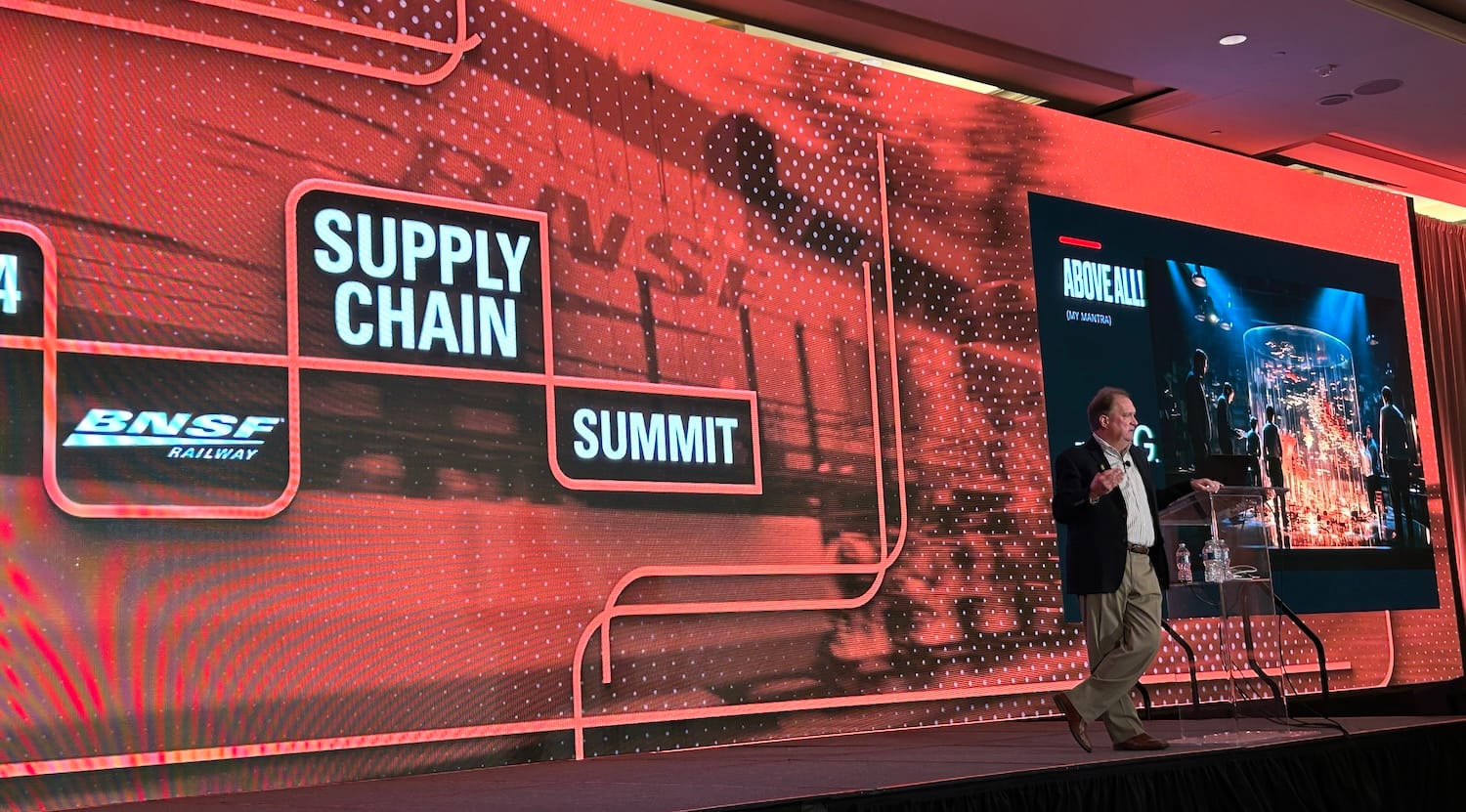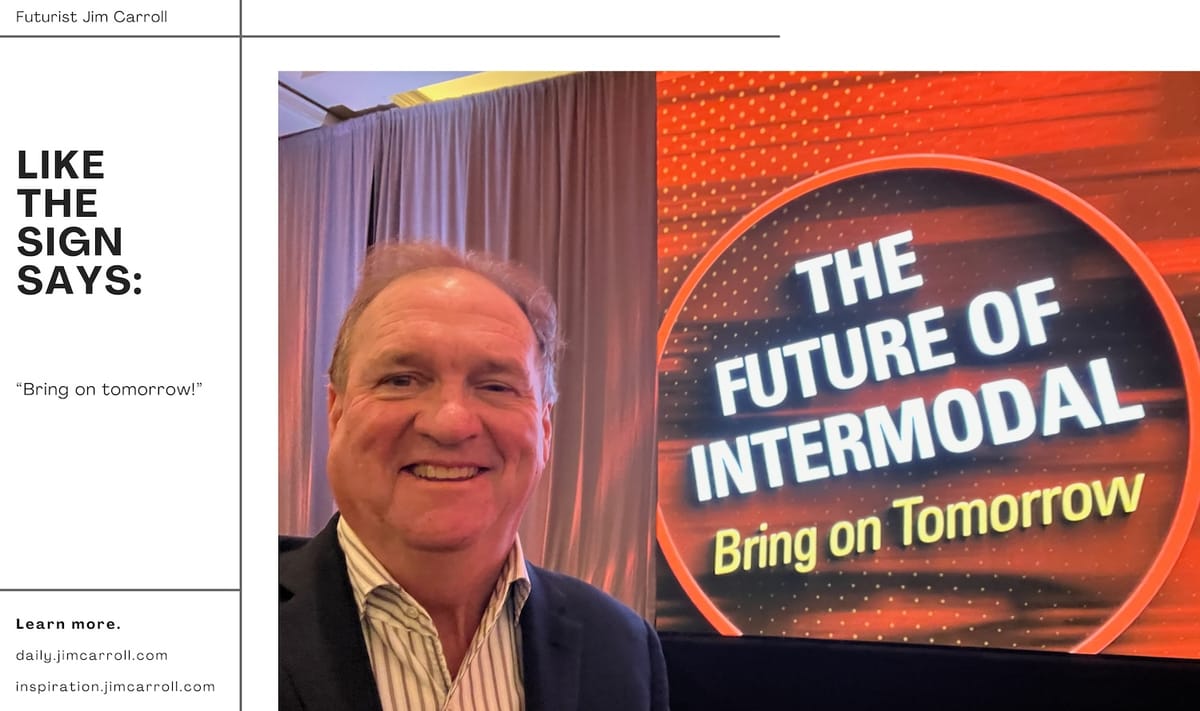"Bring on tomorrow!" - Futurist Jim Carroll
Like the sign says.
Bring on tomorrow - because if you don't, your tomorrow might not work out so well!
The photo is from my stage setup yesterday - an exhilarating day in Fort Worth with a keynote for key customers of the rail/intermodal company BNSF. I probably had every major US retailer in the room, as well as logistics companies like UPS, FedEx, and many others.
The topic? The acceleration of supply chain, retail, AI, logistics, warehousing, shipping and last-mile technologies, and more. I was hard at work up there!

I liked the theme - "Bring on tomorrow" - and that's the approach I took in my talk. In one section, I took them on a fast-paced tour of just a few of the fast-moving trends impacting their world today. I captured that portion of their slides into a little video here. Give it a watch to get the rest of the context below.
Consider just a few of the trends I'm covering in this keynote. These are direct from my slide deck. There's a lot of context in every point.
1. The early influence of the early AI influencers: essentially, retailers learn how to use AI algorithms to influence shopping behavior. A good example is Hungryroot
- “Hungryroot has built a business by shopping for its customers”
- use of AI to predict meal assortment and groceries
- 40% growth rate to $333 million (compared to a broader 1% decline in grocery
- sector trend - Instacart grew transactions by 5% and revenue by 19%
2. The impact of social media commerce - wherein social media companies become retail channels:
- TikTok Shops generated $11.09 billion in gross merchandise volume (GMV) in 2023
- the US has over 31,000 TikTok Shops
- more than 55 million people are using the service one year after launch
3. Omnichannel forever - in essence, every single retailer has to have a physical location, e-commerce delivery, in-store pickup, and soon - drone delivery!
- according to Market Research Future, the global omnichannel retail market's value is expected to exceed $5.36 billion in 2023.
- after adopting omnichannel retail marketing, Zara experienced a boost in online sales by 74%.
- companies with an omnichannel approach see an increase in annual revenue growth of 9.5%
4. The Rise of the Chinese "Amazon megastore' - wherein the small Chinese manufacturer learns to reach the US consumer directly, bypassing retail:
- Temu, Aliexpress, Alibaba, Shein
- Hundreds of thousands of Chinese factories with a direct pipeline to global sales
- ‘Falling off the back of the shipping dock’
- Unique gaming-oriented shopping influence
5. Direct-to-consumer goes permanent - where companies discovered they could cut out the middleman and invoke emotional connections with customers:
- “Chewy” pursues a strategy of ‘emotional customer connections’
- The direct-to-consumer e-commerce market was valued at USD 142.1 Billion in 2022 and is expected to reach USD 591.3 by 2030
6. Experiential everywhere - the boredom generation means stores have to be more than stores - they MUST be 'experiences!" Why?
- collapsed attention spans
- gaming generation dominance
- relentless brand innovation
- ‘boredom with brands’
7. The Rise of the Robots - just this morning, I saw a video wherein Walmart is bringing a robotic manicurist into 3 stores to try it out. Will this be a trend? It could mean:
- In-store robot services
- In-store robot influencers
- In-store robot logistics and packing
- In-store robots!!!!
8. Polarization priorities - brands can get sunk if they get caught up in the culture wars.
These are just a few of the trends impacting this sector today - my message was change happens fast, the future happens fast, and the future belongs to those who are fast!
And those who bring on tomorrow!
Futurist Jim Carroll believes that too many organizations spend time chasing the hot trends, not the right trends.

